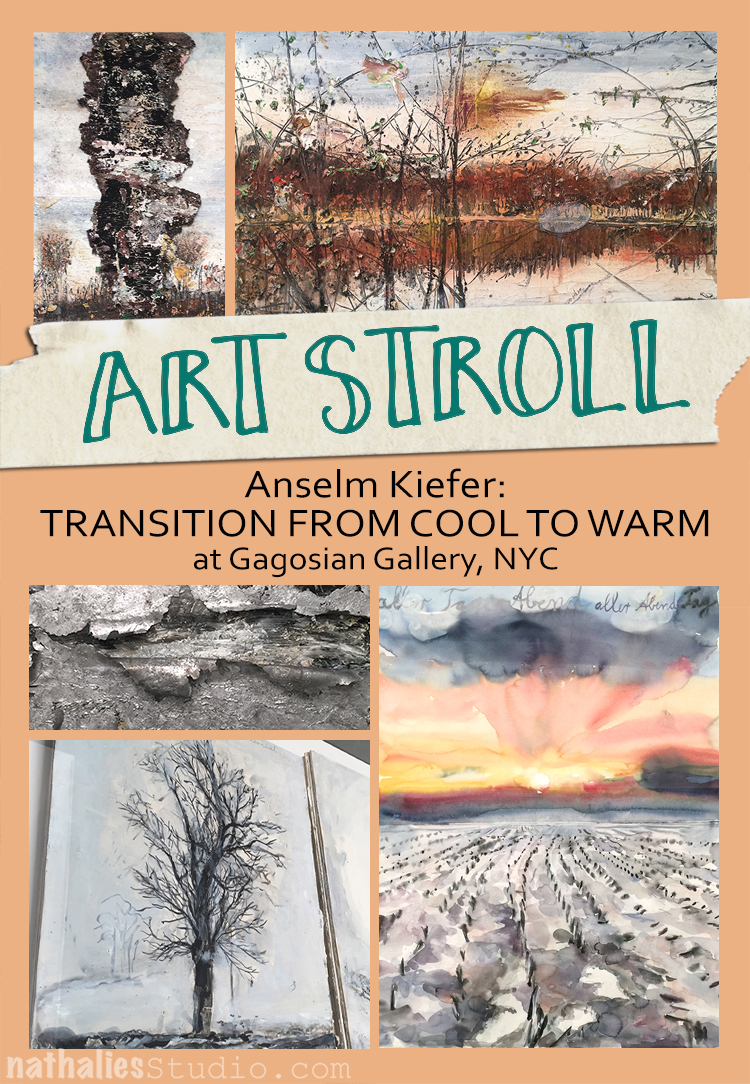
A couple days ago my artist friend Natalya Aikens and I went into the city to go to the Gagosian Gallery to see Anselm Kiefer‘s work. If you participated in Creative Jumpstart 2016, you know that Kiefer is one of my all time favorite artists. When Natalya told me about this exhibition I was crazy excited – and I wasn’t disappointed.
Kiefer is mostly known for his gigantic textured paintings, but he also paints with watercolor on a smaller scale and this exhibition at the Gagosian Gallery shows those two different bodies of works. It fits since Kiefer is interested in opposites.
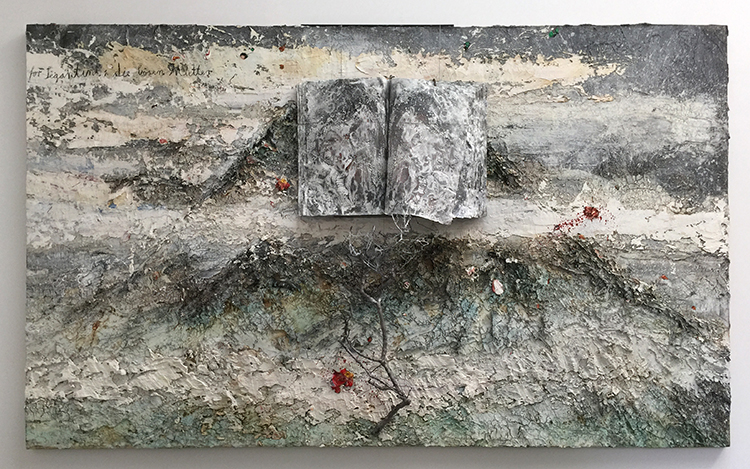
Anselm Kiefer, For Segantini: die bösen Mütter (For Segantini: The Bad Mothers), 2011–12, oil, emulsion, acrylic, shellac, wood, metal, lead, and sediment of an electrolysis on canvas.
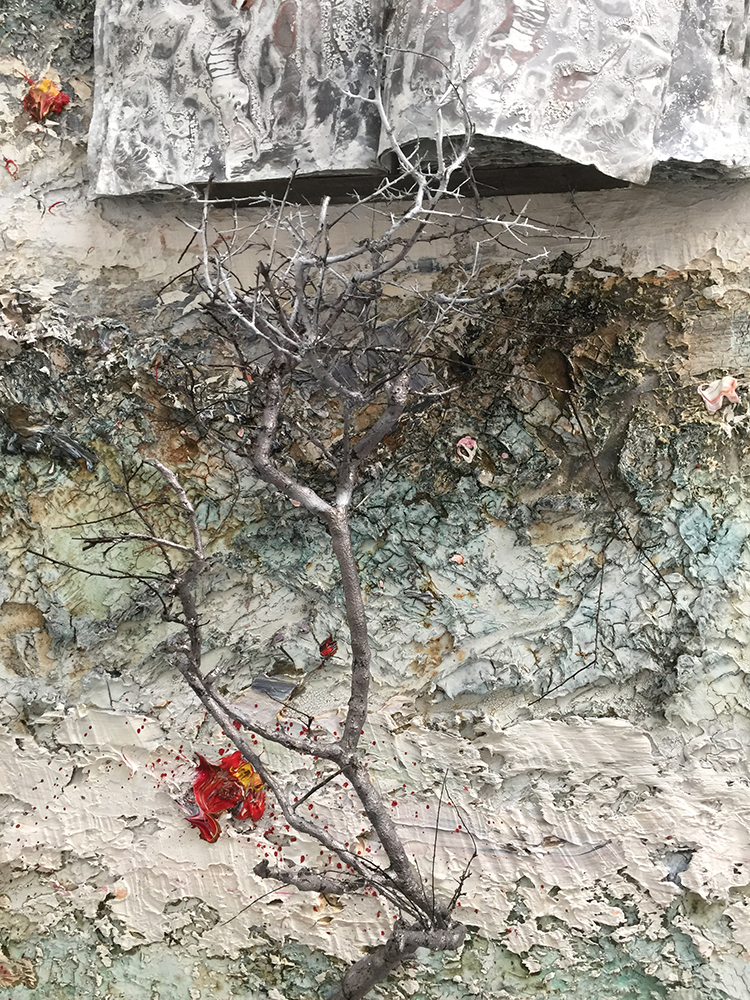
I love how Kiefer incorporates all kinds of materials and he doesn’t really care that a painting could change through aging, or natural alterations. In fact he welcomes this. He says he is more interested in the process – not only the process of making art but also the process of what happens to a painting naturally later – than in an absolute result. I think this is a totally freeing, interesting and open minded approach to art and life.
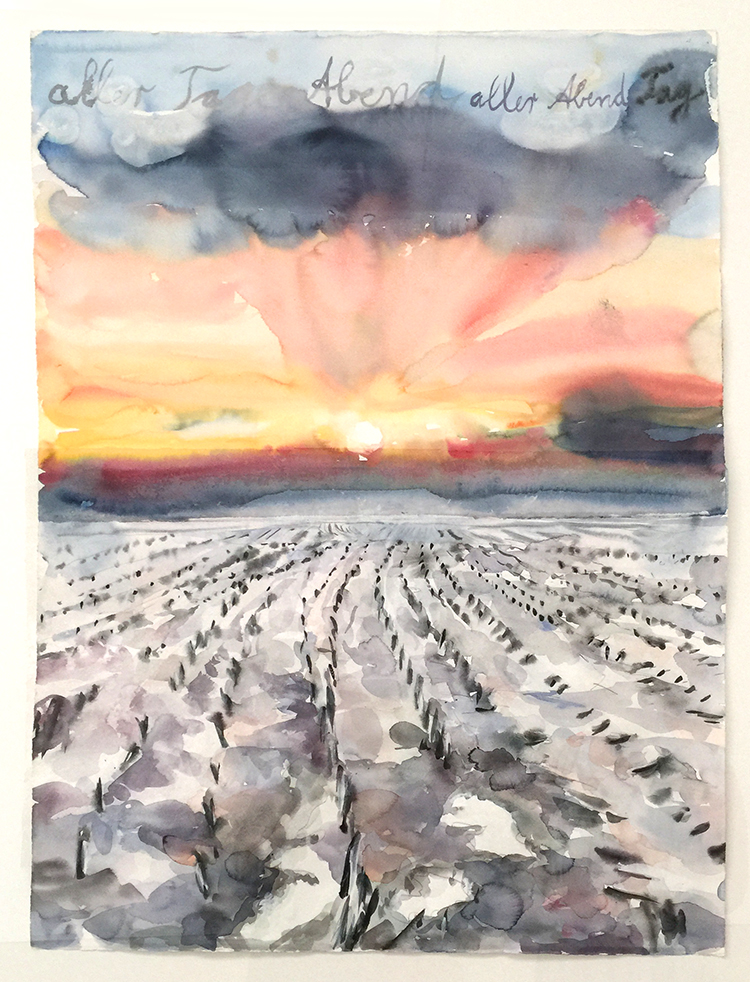
Anselm Kiefer aller Tage Abend, aller Abende Tag (The Evening of All Days, the Day of All Evenings), 2014 Watercolor on paper

Anselm Kiefer Ignis sacer, 2016 Oil, acrylic, and emulsion on canvas

Anselm Kiefer des Malers Atelier (The Painter’s Studio), 2016 Oil, emulsion, acrylic, and shellac on canvas
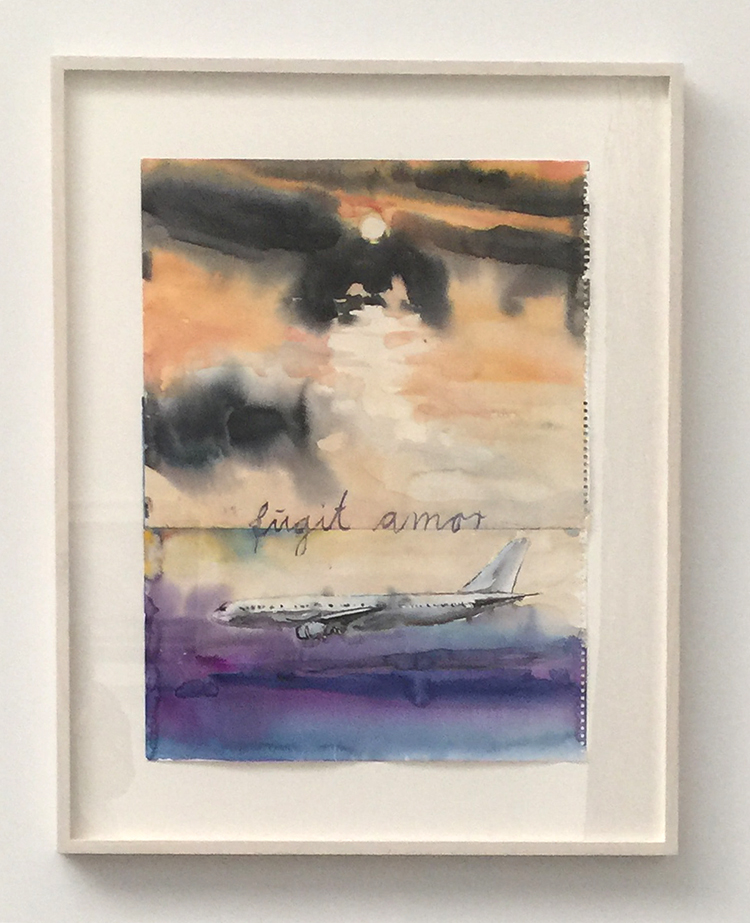
What I found interesting about his watercolor work was how freely he uses the colors, letting them do their thing – something I struggle with then using this paint medium.
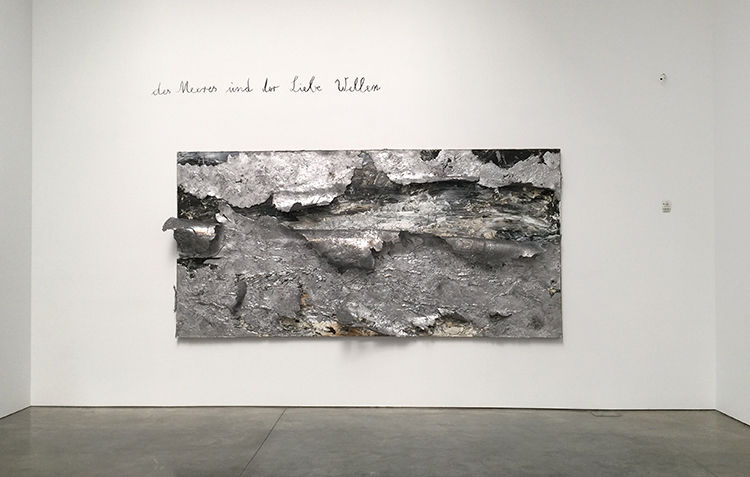
Anselm Kiefer Des Meeres und der Liebe Wellen (The Waves of Sea and Love), 2017 Oil, emulsion, acrylic, and lead on canvas
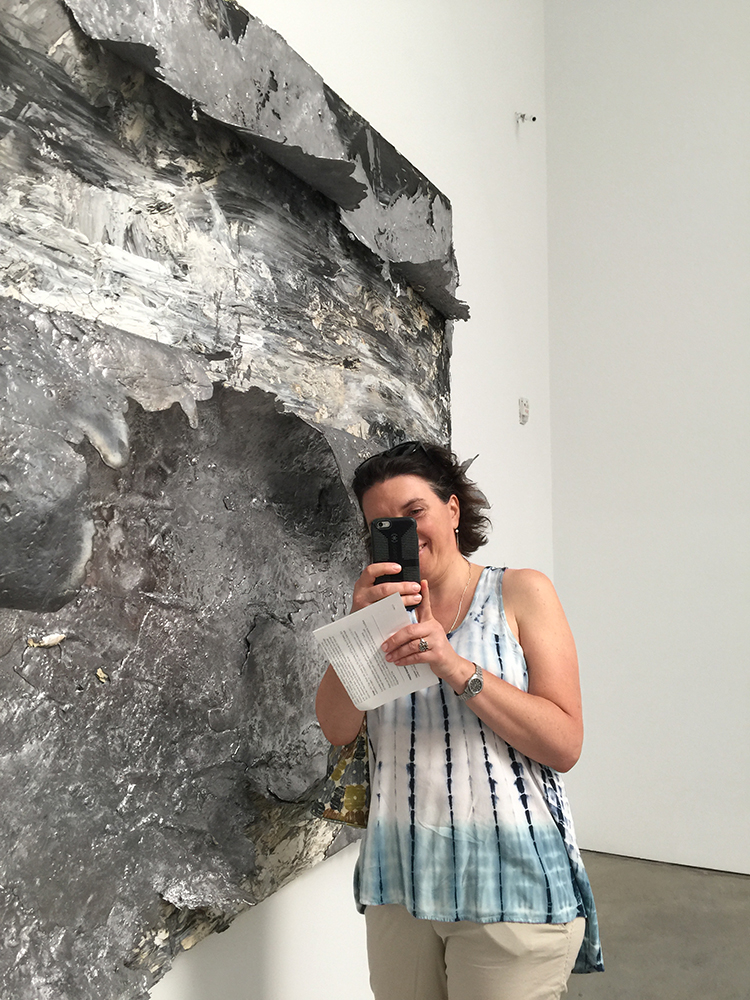
Look at Natalya taking a picture of me taking picture of her in front of a picture …well – hey … little bit of fun is ok ;)
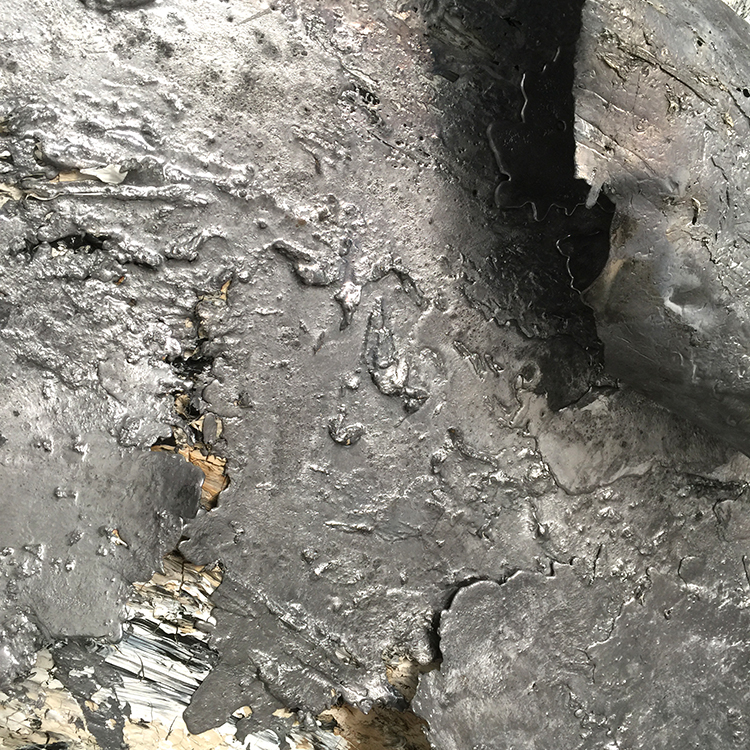
For this painting Kiefer poured liquid lead on top of a painting and then pealed it back to reveal the original painting again.
Kiefer also makes a huge amount of Artist Books. He is fascinated by books and stories, they have always played a huge role in his artwork.

In an interview he once told the interviewer that he starts his morning by going into his library and in a state of still being absence, he blindly grabs a book which usually turns out to be just the right book for the day and often inspires him for his artwork.
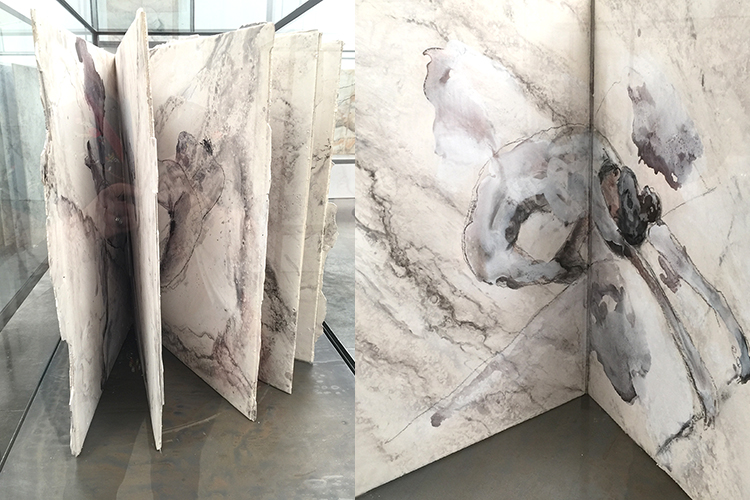
These books are quite big – which is hard to see in these photos – they are more sculptural than books and you are tempted to touch them and flip the pages, although given how heavy they look that might be something you need more arm muscles …and you might never be able to set foot in this gallery again ;)
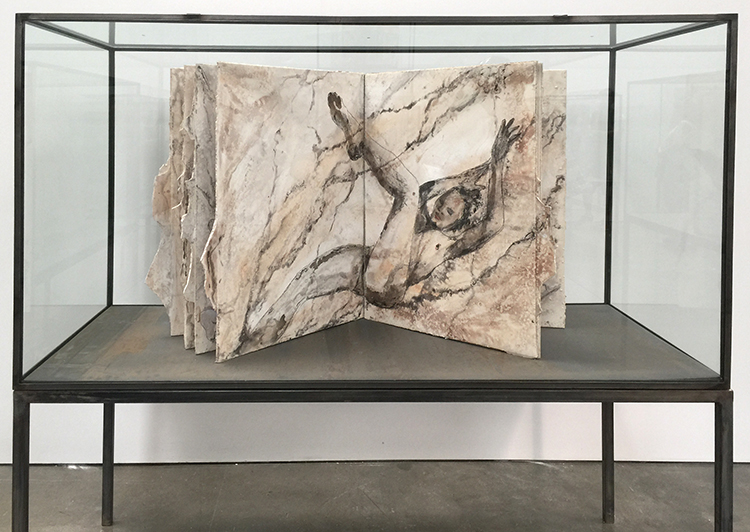
I love the marbling effects Kiefer created – with plaster – maybe gesso and watercolor.
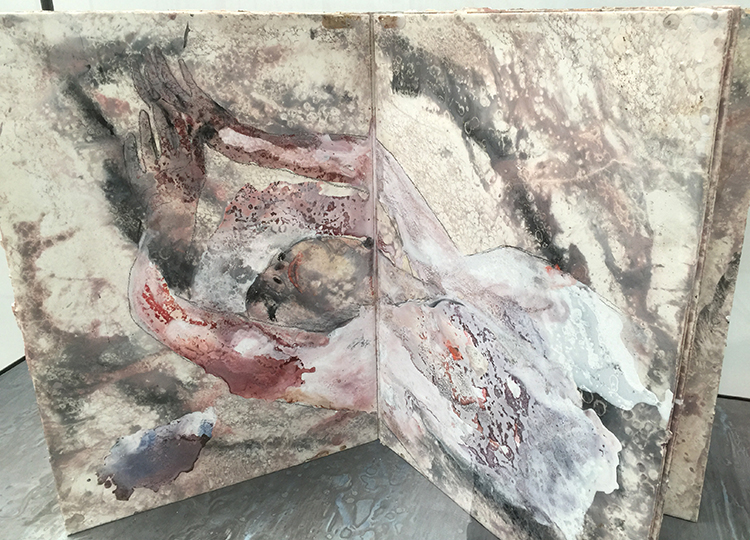
Klingsor’s Garden was the room with all those books called. Klingsor is a magician in the opera Parsifal. He has a garden full of beautiful flower maids.
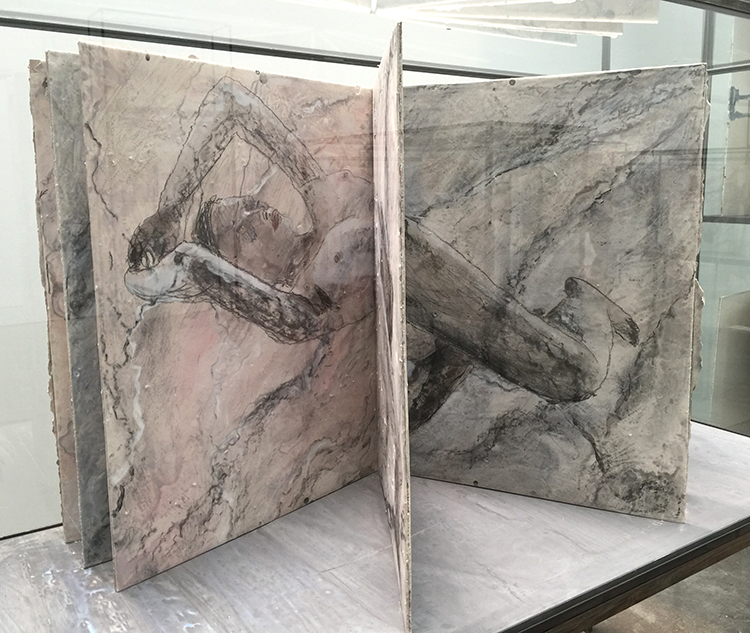
The way those books are set up is like a labyrinth and I guess it is no coincidence that you might get lost in looking at those books from all angles.
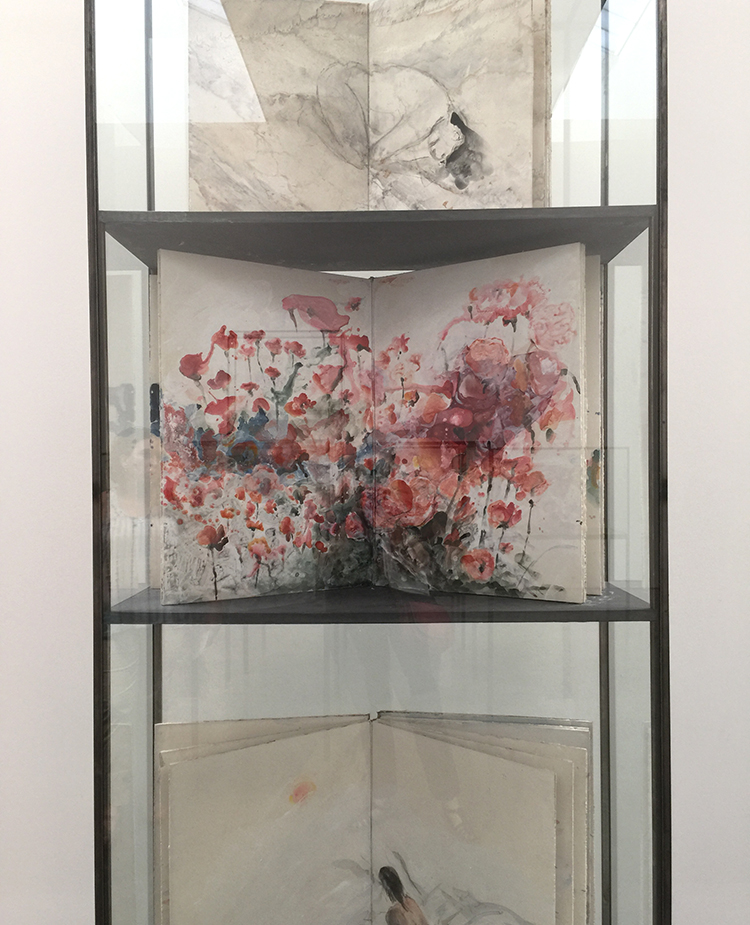
Fascinating!
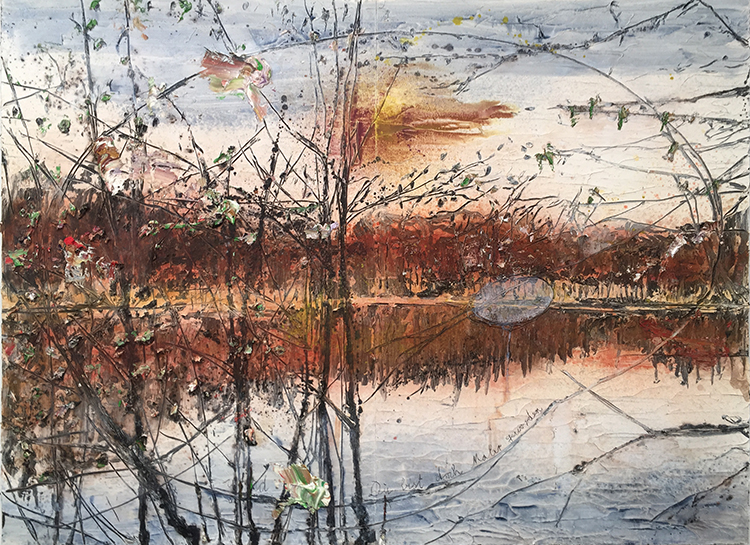
Anselm Kiefer, Und Du bist doch Maler geworden (and you became a painter nethertheless)
I didn’t see it in the gallery as this is a huge painting but when I actually took a look at the photo of the painting at home I realized there is painter’s palette carved into the painting – a painting about painting.
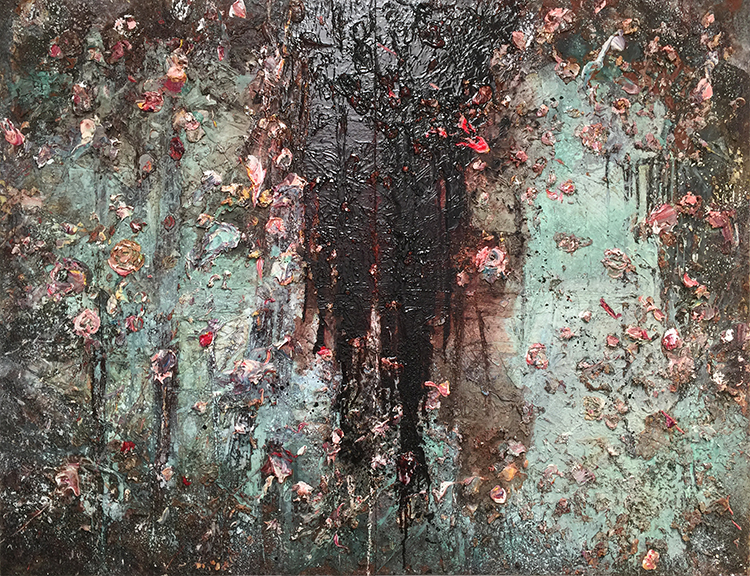
Anselm Kiefer, Aurora, 2015–17, oil, emulsion, acrylic, shellac, and sediment of an electrolysis on canvas
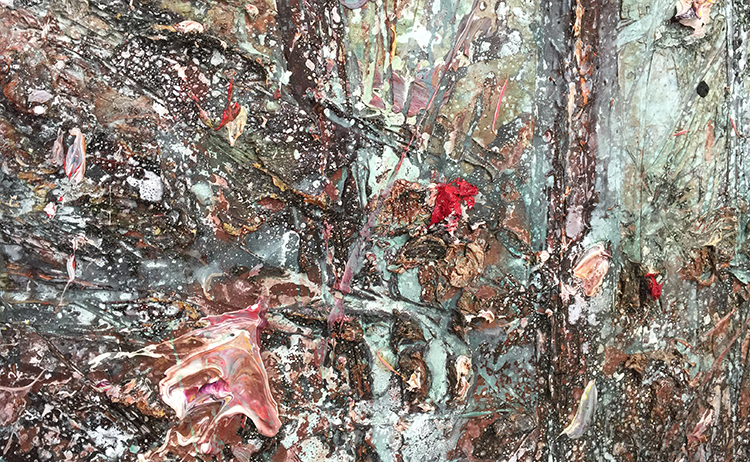
The texture and dimension in his work is just unreal . You have to see his work in person.
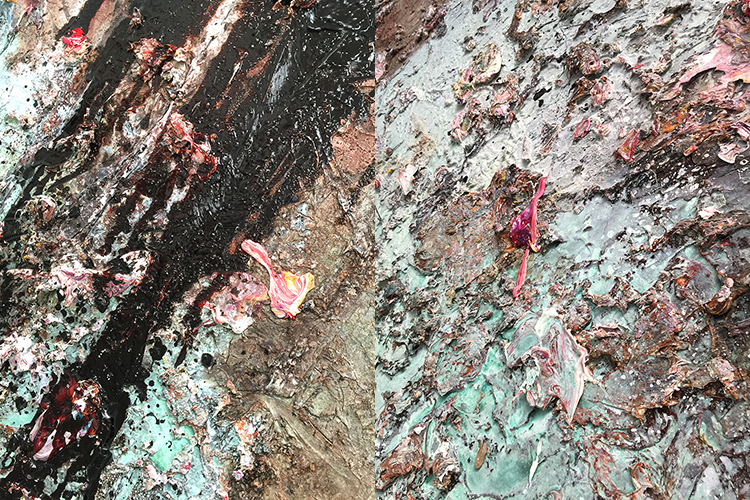
Given that this painting is so new- I would bet that it is still changing, drying, and processing. Now …if that is what the artist likes and wants… who are we to preserve it and have conservators going nuts about up-keeping the status quo?
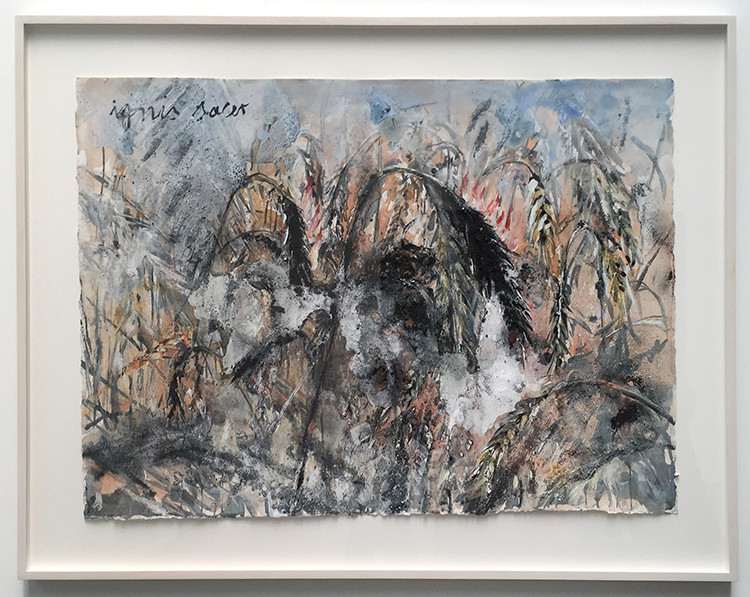
When I first looked at Kiefer’s watercolors I thought they were so different to his big paintings because of the missing texture but the closer I looked, the more I realized that he actually included a lot of texture with charcoal in some of them – and then there is also a lot of visual texture especially in the one above. But even the ones I showed earlier in this post have areas of texture quite unusual for watercolor painting.
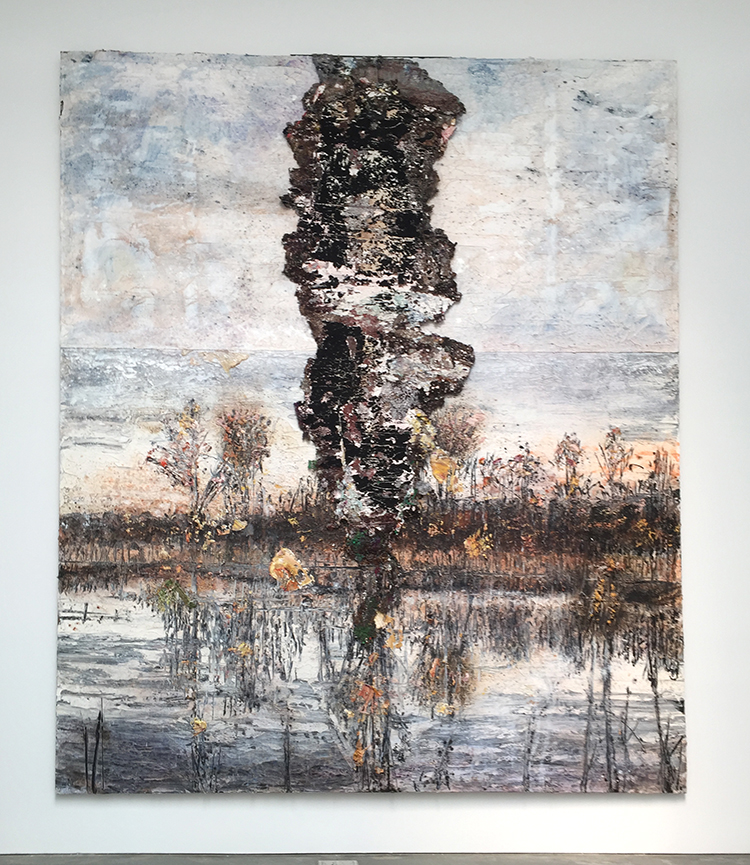
In one of the videos I saw a while back about Kiefer’s work I saw him hacking with a machete into his thickly layered painting. Big pieces of paint chips fly off the canvas, revealing yet even still thick layers of paint underneath. There was something so liberating and yet shocking seeing his actions.
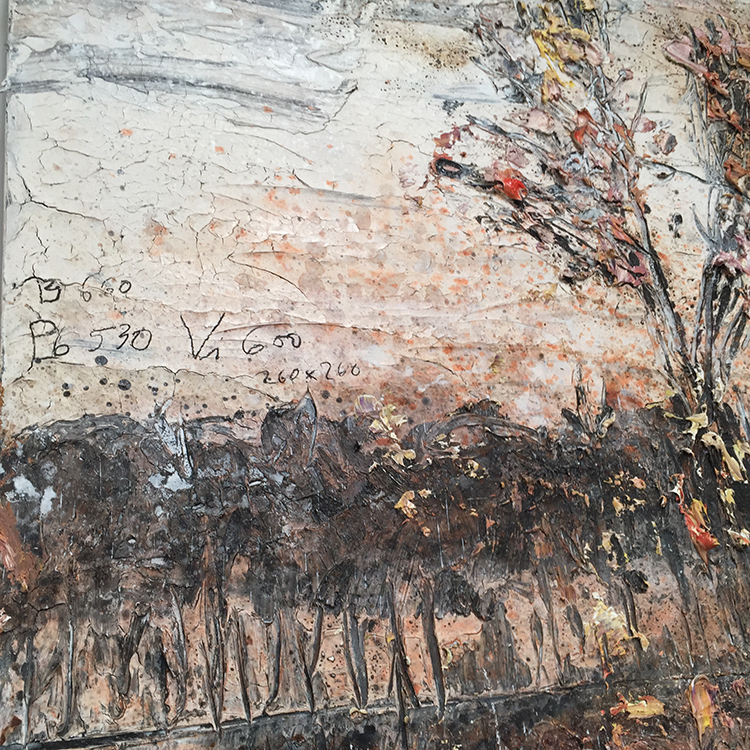
I love the beauty that get’s revealed by the act of slashing, scraping and peeling.
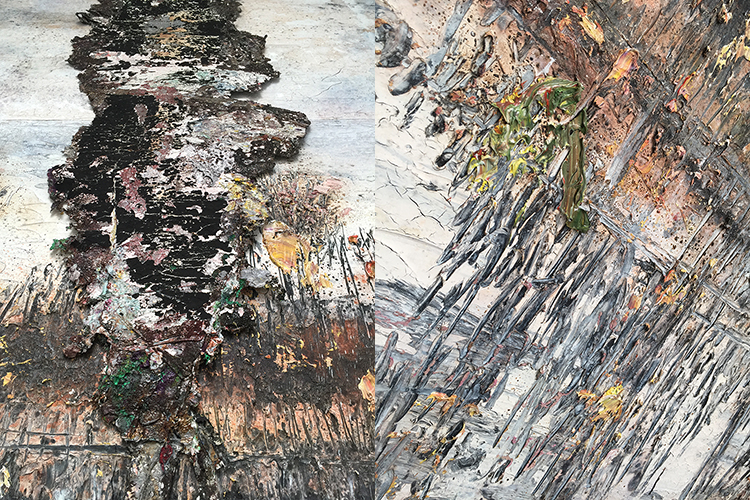
I also loved how some of the books had these raw edges – and as a viewer who always makes up their own story when looking at artwork for me Kiefer’s work is about human beings.
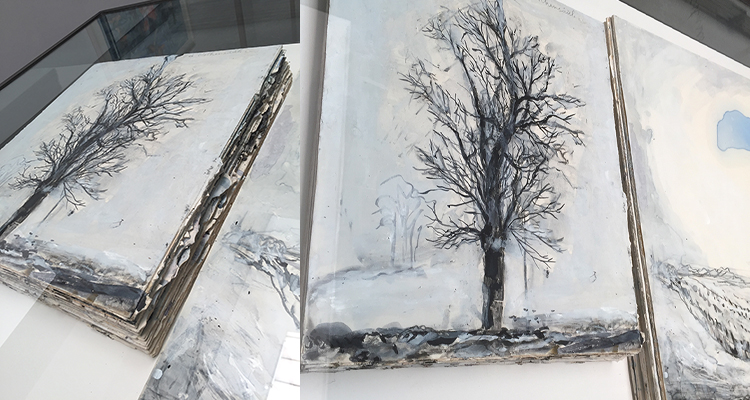
We are complicated, controversial, complex, layered, good and bad, we change, we can transform. Behind all the ugliness of human beings are always layers of beauty. There are no monsters and that is for me what explains why people can be horrible and cruel but then also be loving and like-able. That is what in my eyes his artwork represents.

This exhibition has inspired me to no end – lot’s of thoughts, ideas, craving to explore. If you are in NYC – check this exhibition out– it got extended and it is open until September 1st. Don’t be intimidated that it is a gallery – the people at the desk barely lift their head when you come in- they know you are not there to buy but it seemed utterly fine for them and I think Kiefer approves ;)

Comments (4)
Janis Loehr
| #
Thank you Nathalie for sharing!
Reply
nathalie-kalbach
| #
thanks for joining, Janis!
Reply
stephanie
| #
What an amazing exhibit!
Reply
nathalie-kalbach
| #
it was indeed- very tempting to touch everything- LOL
Reply